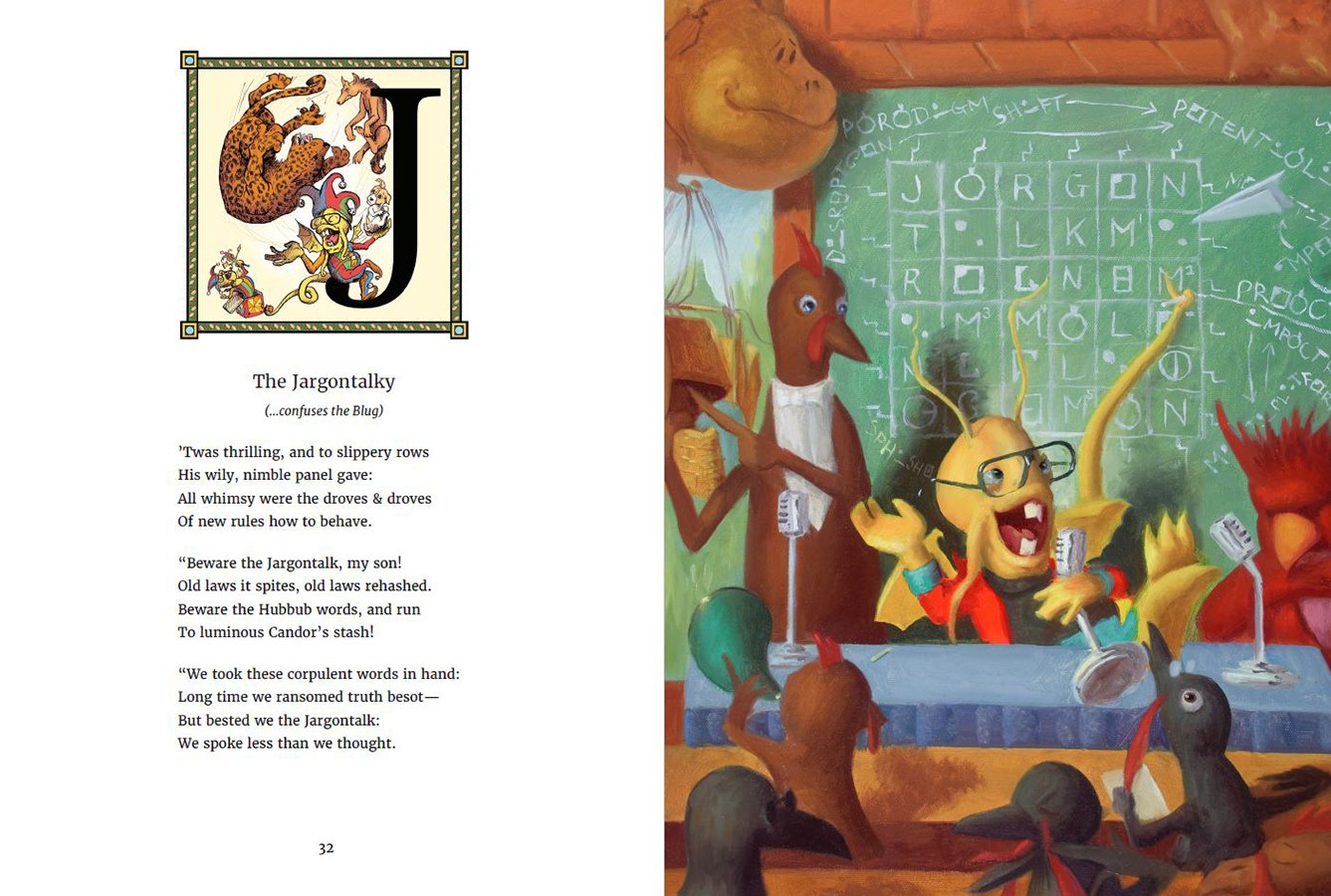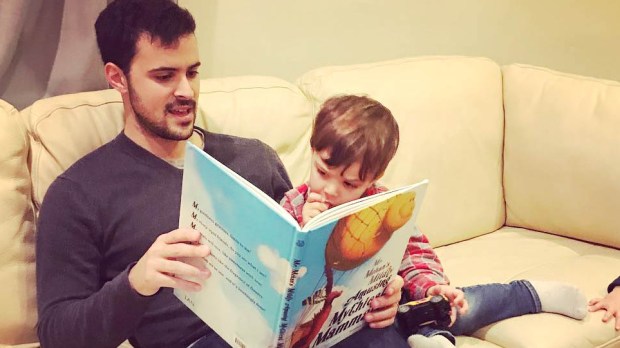Reading Dr. Seuss is hardly a spiritual experience, by most estimations. Better to dive into the great doctors of the Church.
And yet, a training in wit, in poetry, in visual imagination is more important to our spiritual life than many might think.
Or so considers author and educator Dr. Matthew Mehan, who has released with TAN Books a mix of “old” eternal truths, presented in new and entertaining ways — through poetry and art and illustration — in Mr. Mehan’s Mildly Amusing Mythical Mammals: A Hypothetical Alphabetical.
Aleteia asked him to talk to us about this unique book, which at coffee-table size and quality, might well be one to add to your Christmas list this year, for young and not-so-young alike.
You have aimed to create something unique in our day: A mix of Dr. Seuss and the story-telling and imagination of old. Why?
I wanted to reintroduce many good and beautiful things into our shared imagination, but in a new and delightful way. After teaching English for 20 years on the high school and college level, and even getting a PhD studying Literature, especially the writings of St. Thomas More and Shakespeare (and my favorite roly-poly pal Chaucer!), after seeing how important the poetic and visual arts are for coming to know but also to love the good things of our Faith and our long Greco-Roman, Judeo-Christian tradition—after all that, I felt called to write Mehan’s Mammals. That mix of old and new became a call of conscience for me, frankly.
As I worked and prayed my way through the making of this book, I repeatedly came back to two passages from Matthew’s Gospel, and each of them represent an important aspect of poetry.
First, Matthew 13:52, when Christ says, “Therefore every scribe instructed in the kingdom of heaven, is like to a man that is a householder, who bringeth forth out of his treasure new things and old.”
The combination of “old” eternal truths, mixed in new and entertaining ways, is the work of poetry and art.
The ancient Roman poet Horace famously said that poetry must both delight and instruct. A good poet, like a good scribe (that simply means writer, in one sense!), must bring forth the old mixed with the new! Truth mixed in fiction! There’s a reason the Letter M mammal in Mr. Mehan’s Mildly Amusing Mythical Mammal is called “The Mixxy”!
The second passage is Matthew 10:16: “Behold I send you as sheep in the midst of wolves. Be ye therefore wise as serpents and simple as doves.”
This famous passage animated the Christian Humanists of old, writers like Desiderius Erasmus and St. Thomas More.
Christ is saying that we must remain true and simple like the dove of the Holy Spirit, but that we must be subtle and clever like the worldly arts of philosophy and poetry. Poetry should begin to teach wit and wisdom together, in the service of a holy life.
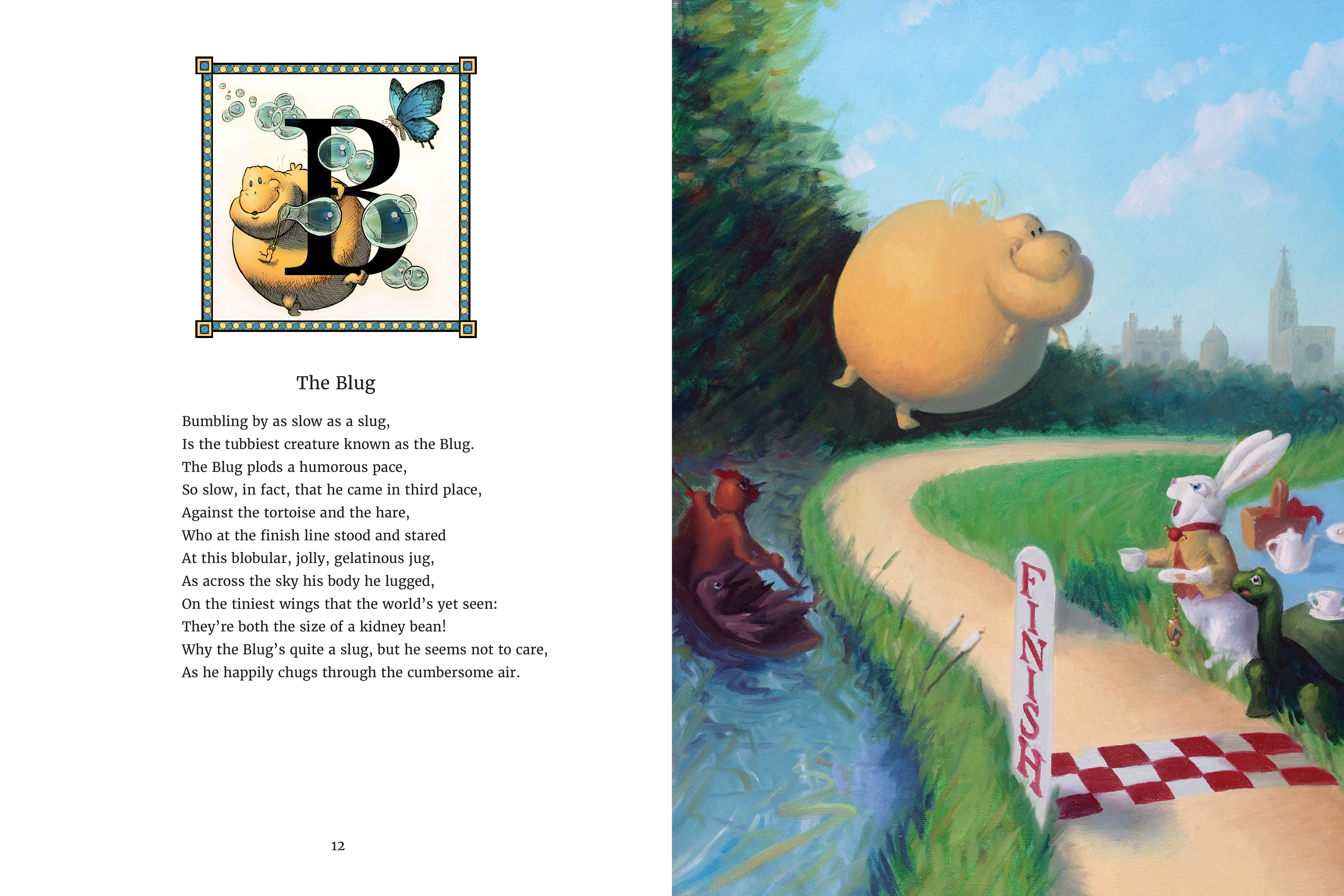
I feel that too few poets take up this serious duty, mostly because they don’t know all that poetry can do to help us grow and flourish interiorly and individually, but also socially, together in friendship. It’s not enough just to be good. Poetry can help us be prudent and clever about how we go about being good. That way, we humble little sheep, we simple doves will see wolves and serpents coming (or coming for our friends!) before it’s too late.
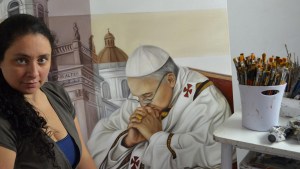
Read more:
Pope Francis asks artists for help
It sounds crazy, but once you know all that poetry can do to help us live and love well, it is crazy not to engage the arts in this Christian Humanist way. Dr. Seuss and the great doctors! Silly and serious! Myth and mammal!
As an educator, what do you think must be done to foster imagination in our children and why is this important?
As an educator, taking off my poet-writer hat, I’d say that, over and above the many good things we teachers already do, we need to rededicate literary studies to the development of a few human powers that we too often underestimate, namely (1) the development of the moral imagination and (2) the training of what Chaucer (and Thomas More) called our “good mother wit.”
Moral imagination allows our hearts to love and hate the right things because we bond with beautiful images of good and evil and recognize them as such. For instance, a poet might depict a beautiful winged woman who cannot control her tongue and spouts off sad recollections of her own wrong-doing in a wild way that makes her sorrows worse, not better. In the poem she might be trapped in a pool of her own tears. In fact, that’s “The Nólle,” the Letter N poem and one of the saddest of the mythical mammals. Such an image tunes our moral imagination to avoid weeping in a way that makes matters worse, even as we wonder at the source of such sadness.
Or try something less sad: a warm bit of poetic verse, in which the poet praises and lovingly laughs at the noble and sometimes hilarious suffering of parents as they raise their children. That’s “The Tale of the Tanglis,” the Letter T poem and one of the funnier of the collection. Imagining fat butterball mammals struggling to raise their pups can help us all laugh together in a good way about the difficulties of family life.

Read more:
‘Charlotte’s Web’ gave my son a first taste of suffering, and it nearly killed me
And training up our “good mother wit” is also important. If you read a poem in Mehan’s Mammals and think, “Hmm. I enjoyed this fuzzy little mammal, and yet I think something more than meets the eye is going on here,” then you’re beginning to see the wit that hides in poetry.
Myth, metaphor, analogy, simile—these and many other devices of language and image help us see not only the literal truth, but also what lies beneath and beyond the literal truth. It helps us see what someone is really trying to say, a very useful and witty skill in friendship, right? It helps us tell, as Hamlet said, “a hawk from a handsaw” or a tyrant from a useful leader, by reading between the lines of his or her campaign literature and stump speeches.
But most importantly good wit teaches us how to read the Good Book and the Book of Life in order to see the truth and the Truth that shines forth, peeping out at us in all of creation and in the Word of God. A training in wit is a training in how to see the many ways God speaks to us through his creation and through the inspired word, sacred rites, and so much more. Wit, it seems—fittingly so!—is more important than it first appears to be!
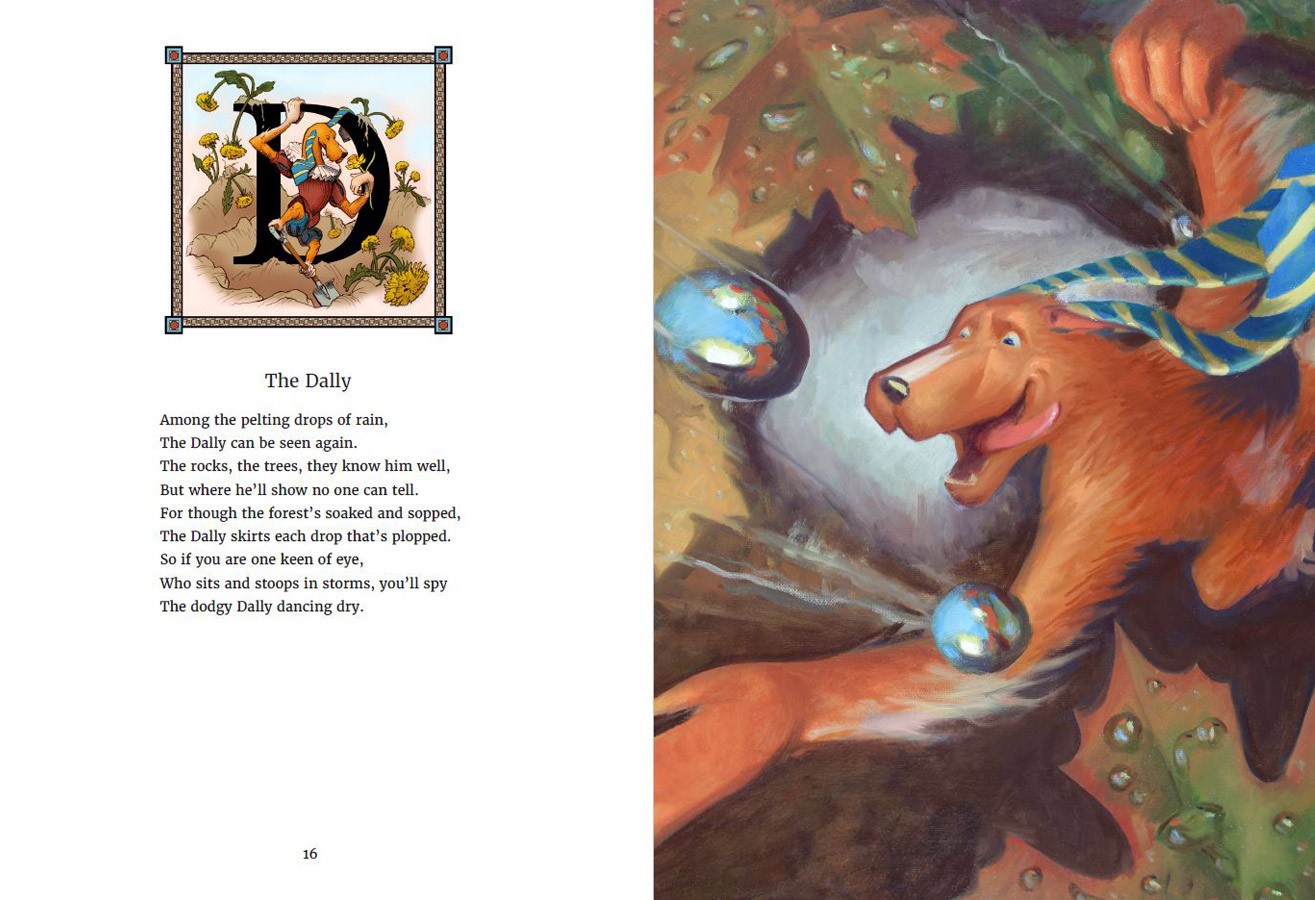
Is today’s audience capable of this book?
Yes! I’ve taught for 20 years, and I am always rewarded when I give the best to my students. Mehan’s Mammals is no different. The quality, the diction, the wit and wisdom, the realist-impressionist paintings—all of it is higher toned than most are used to. That said, like listening to a new band’s music that you know is good but takes a few listens of the album before you really come to appreciate it, Mehan’s Mammals is at first mysterious and whimsical, then curious and complex, but, over time, it becomes a humorous and beautiful friend (or two friends! Illustrator John Folley and me!) to your whole family.
You are good friends with the illustrator. Tell us about how the visual imagination is part of your effort with this book.
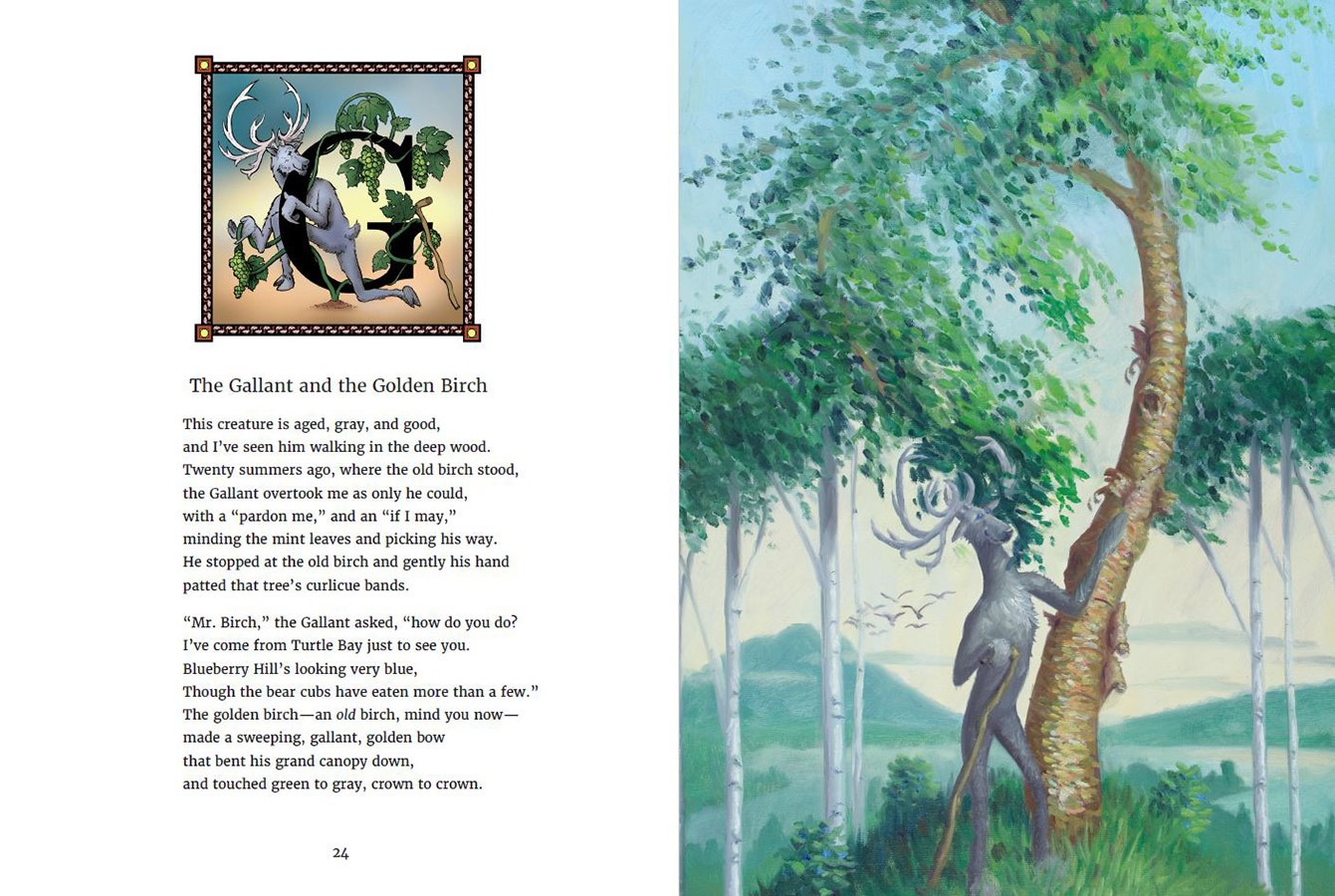
John and I are good friends, and this book is a testament to our friendship. It took years to fully gel my poetry and ideas with John’s incredible visual artistry. The symbiotic unity of the paintings and poems is a testament to the art of friendship and the arts of communication that the two of us labored dearly to develop, only in part for this book!
For instance, we made political cartoons for a whole year, one a week, just to practice getting ideas from me into John’s artwork. We learned a ton from that experience, and it made the artwork, even more deeply thematic, corresponding to the poetry in all kinds of curious and haunting ways.
Illustration, like poetry, is so important because, as the title of my book emphasizes, we are mammals. We are embodied creatures. We are not pure intellects. That means we need images, beautiful forms—formal poetry and formal artistic representation—to truly come to know and love the Good, the True, and the Beautiful. We chose the form of an alphabet book because we wanted to help people read the sensible world well, and to do that we must read images.
And ultimately, we need the true image, the imago Dei, Christ, God who took flesh, visible, sensible—even mammalian—flesh. Poetry and paintings are both a kind of preparation for higher, more beautiful things, through lower things. John Folley and I labored greatly to offer families a beautiful book that prepares Catholics and non-Catholics alike—agnostics and atheists too!—to begin to see the world of creation aright, creation that is shot through and through with the glory of God.
